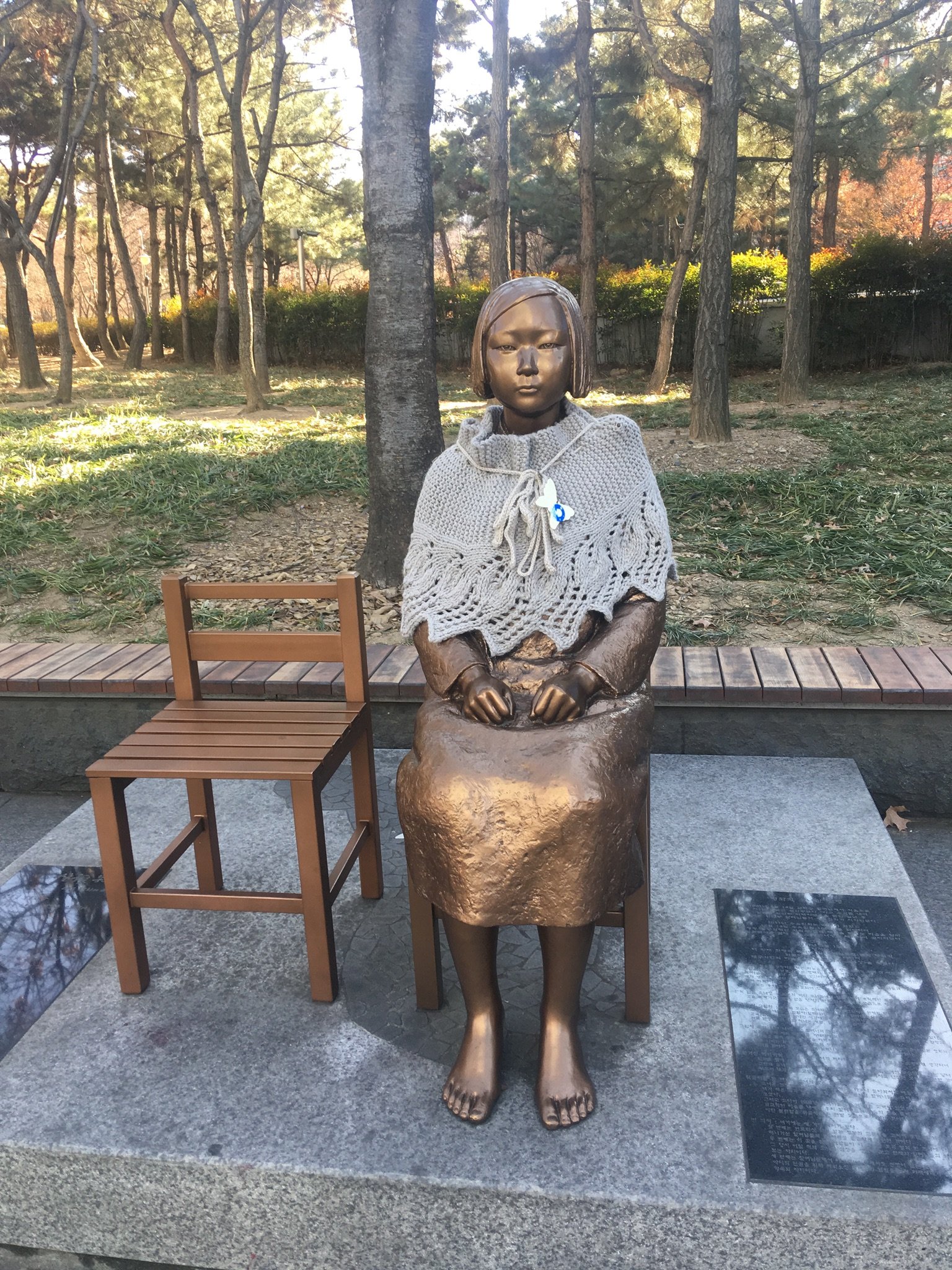Halmoni, was an art project that began in 2020 during the confines of the pandemic. Like many good things at that time it arose from a zoom call. On the other end of the screen was my future collaborator, activist and photographer Tsukasa Yajima who was then the manager at the House of Sharing in Seoul.
The House of Sharing, Seoul
Taken 2019
The House of sharing is a government funded residential home for the survivors of Japanese military sexual violence, known euphemistically as ‘the comfort women’. Women now in their 90s and 100s who as young girls were kidnapped from their homes, coerced and sent to so called ‘comfort stations’ situated across Asia, where they were subject to unimaginable sexual violence and abuse. The women are referred to affectionately in Korea as ‘Halmoni’s, meaning ‘Grandmother’ in English, it is a term of both endearment and respect.
But I suppose really the seeds of Halmoni were sown long before lockdown. It would be disingenuous after all to deny the personal and political reasons why this subject resonates for me. In my late twenties I took my own abuser to court, and sadly like so many survivors of sexual abuse I spectacularly ‘lost.’ Shortly after the travesty of my court case, plagued by the cruel injustice of my experience, I moved to South Korea, where I settled in a city called Daegu to start a new chapter.
One day while I was characteristically lost I stumbled across a statue of a girl. She was intriguingly beautiful. I later found out the girl was called ‘Sonyeosang’ in Korean, which translates to ‘the statue of peace’ . I discovered that she symbolised the lost youth of the women trafficked and enslaved by the Japanese military during the second world war. Desperate to learn more about her, and her story I visited the House of Sharing to further educate myself.
While at the House of Sharing I learnt that every Wednesday in the centre of Seoul activists gathered next to the Japanese embassy to protest in the name of the survivors, and to request an apology from the Japanese government for the crimes committed against them. I also learnt that in 1990 the first survivor, Hak Bok Sun bravely came forward, and shared her testimony on public tv, inspiring hundreds of women across the globe-from China to the Philippines- to proclaim, ‘me too.’
I learnt too that those same women created together a document which they called ‘the seven demands,’ requesting for the world to be informed about the war crimes they had suffered. It was this request that was the inspiration for ‘Halmoni.’ The goal, vision and purpose of project Halmoni is to spread and raise awareness in the West of one of the greatest crimes against women in the whole of human history. It’s aim is to give voice to the testimonies of the Halmoni’s and to honour their memory.
The Statue of Peace, Daegu
Taken in 2019

